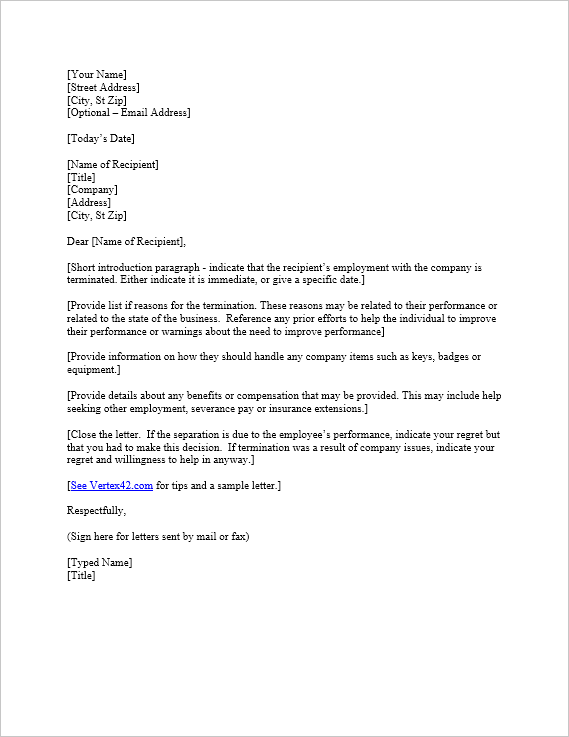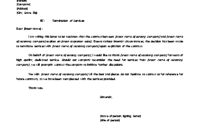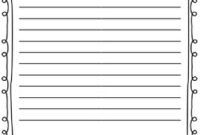Let’s face it, having to end an employment relationship is one of the most challenging tasks any employer or HR professional can face. It’s a situation fraught with emotional complexity for everyone involved, and it carries significant legal implications if not handled with care. Beyond the human aspect, a poorly executed termination can lead to misunderstandings, disputes, and potential legal challenges, making a difficult situation even more complicated.
That’s precisely why having a clear, concise, and legally sound termination letter is not just good practice, but an absolute necessity. It serves as a formal record, clarifies the terms of separation, and helps ensure compliance with labor laws. Crafting such a document can feel daunting, but thankfully, a well-structured termination letter template for employee can provide the guidance needed to navigate this sensitive process professionally and respectfully.
Crafting Your Termination Letter: Key Components and Best Practices
When it comes to formalizing an employee’s departure, the termination letter stands as a crucial document. It’s not merely a formality; it acts as a legal record of the separation, outlining the terms and conditions in an unambiguous manner. A comprehensive letter helps to prevent misunderstandings, addresses potential questions proactively, and most importantly, protects both the employer and the employee by providing a clear, written account of the termination details. Without a thorough letter, both parties are left vulnerable to misinterpretations or disputes down the line.
The content of your termination letter should be meticulously prepared, ensuring that all pertinent information is included accurately and objectively. While the specific details may vary depending on the reasons for termination and local regulations, there are fundamental components that should always be present. These elements ensure that the letter provides a complete picture of the employee’s final status and entitlements, helping them to transition smoothly and understand their next steps.
Essential Information to Include
To ensure your letter is comprehensive and effective, consider incorporating the following key pieces of information. This structured approach ensures nothing important is overlooked and that the employee receives all necessary details regarding their separation.

- The effective date of termination: Clearly state when the employment relationship officially ends.
- The reason for termination: While not always legally required to be explicitly stated in detail, company policy or specific legal circumstances may dictate its inclusion. Be factual and objective if you choose to include it.
- Final pay information: Detail how and when the employee will receive their final wages, including any accrued vacation pay or severance package entitlements.
- Information about benefits continuation: Provide details regarding health insurance (e.g., COBRA in the U.S.), retirement plans, and other benefits that may continue or cease.
- Return of company property: List any company assets that need to be returned, such as laptops, keys, ID badges, or company credit cards, and specify the return process.
- Confidentiality and non-compete clauses: Remind the employee of any existing agreements regarding confidentiality, non-solicitation, or non-compete clauses that remain in effect post-employment.
- Contact for questions: Designate a specific HR representative or department as the point of contact for any questions the employee may have regarding their termination or benefits.
Beyond these points, always strive for a professional and respectful tone throughout the letter. Avoid emotional language, personal opinions, or accusations. The goal is to provide a factual, objective, and legally compliant document that formally concludes the employment relationship, leaving no room for ambiguity.
Navigating the Process: Beyond the Letter
While a perfectly crafted termination letter is undeniably vital, the act of termination encompasses more than just the document itself. The entire process, from the initial decision-making to the final handshake, demands a consistent approach rooted in professionalism and empathy. Remember, this is a human interaction, and the way it is conducted can significantly impact the employee’s dignity, their perception of the company, and even potential legal outcomes. Therefore, consider the broader context in which the letter is delivered and the steps that precede and follow it.
An in-person meeting, where feasible, is often the most appropriate way to deliver a termination notice. This allows for a direct, albeit difficult, conversation, providing an opportunity for the employee to ask immediate questions and for the employer to offer support or clarification. The written termination letter then serves as a formal summary and confirmation of what was discussed in that meeting, ensuring all verbal communications are backed by a consistent and legally sound document. This dual approach helps bridge the gap between human interaction and legal formality.
Before finalizing and delivering any termination letter, particularly a termination letter template for employee that has been adapted, it is highly advisable to seek legal counsel or consult with experienced HR professionals. Employment laws are complex and vary by jurisdiction, and what might be acceptable in one region could be problematic in another. A legal review can identify potential risks, ensure compliance with all applicable local, state, and federal regulations, and help tailor the letter to the specific circumstances of the termination, minimizing the likelihood of future disputes or legal challenges.
The manner in which the termination letter is delivered, and the subsequent actions taken by the company, are just as crucial as the letter’s content. Ensure that the delivery is done discreetly and respectfully, ideally with two company representatives present. Be prepared to answer questions calmly and factually, avoiding any debates or prolonged discussions. After the meeting, promptly process all final payroll, benefits, and administrative actions. A smooth and organized post-termination process reflects positively on the company and demonstrates respect for the departing employee.
- Ensure all company property is returned according to the outlined process in the letter.
- Update internal employee records immediately to reflect the termination status.
- Communicate internally about the departure in a concise and professional manner, if appropriate.
- Process final payroll and benefits according to all applicable regulations and company policy.
Navigating an employee termination requires a delicate balance of legal precision, administrative efficiency, and human sensitivity. By paying meticulous attention to both the content of the termination letter and the overall process, employers can manage these challenging situations effectively and with integrity. A well-prepared approach minimizes risks, upholds the company’s values, and ensures a respectful conclusion to the employment relationship for all parties involved. This comprehensive strategy ultimately protects the business while also treating the departing individual with the consideration they deserve during a difficult transition.



